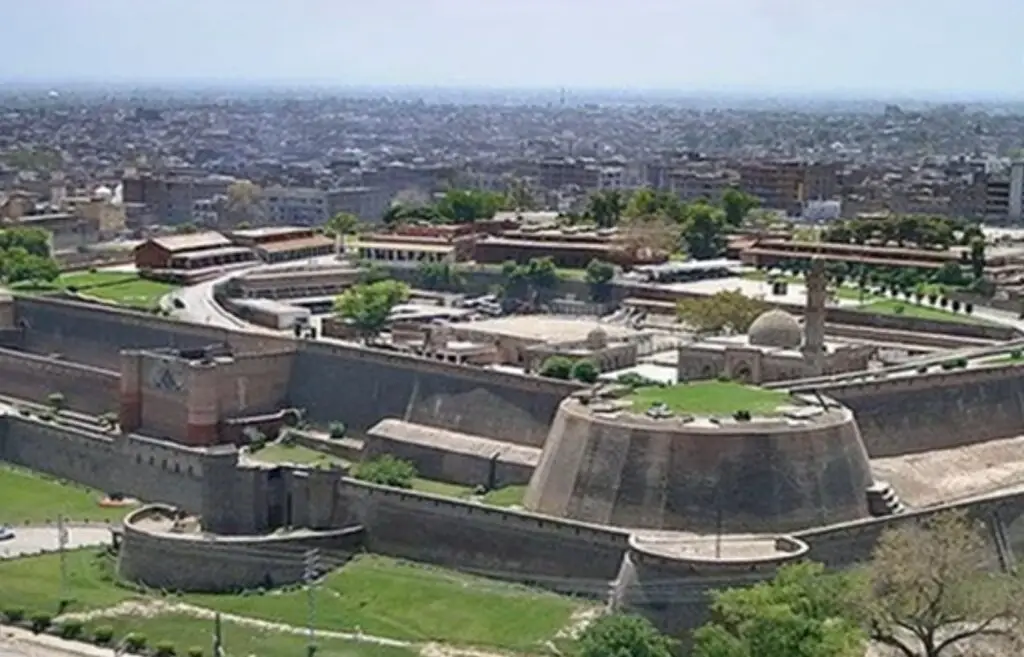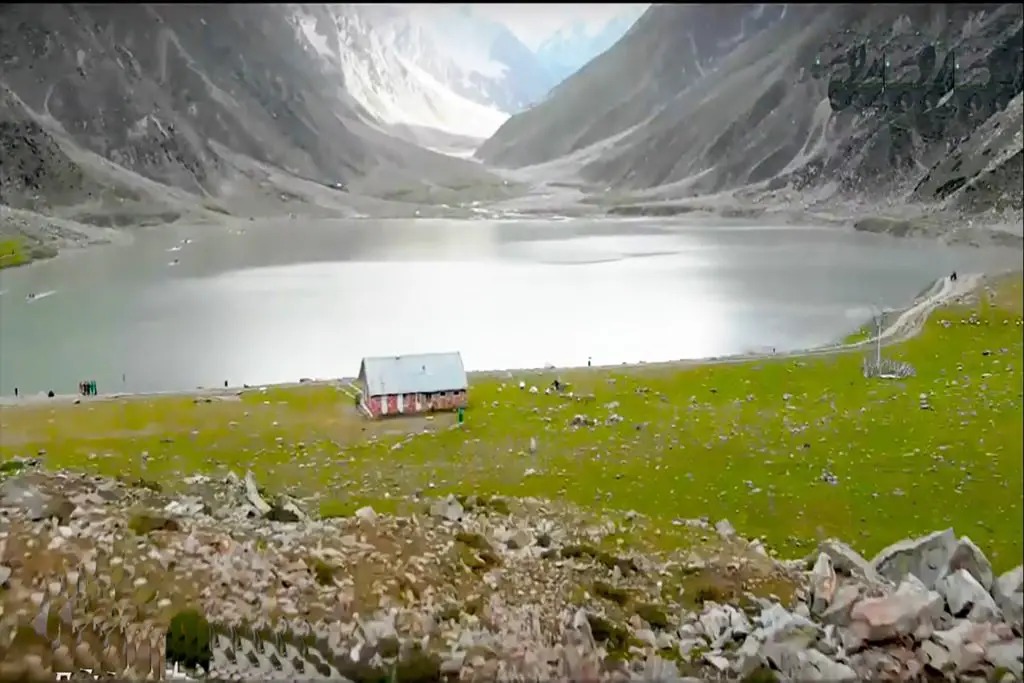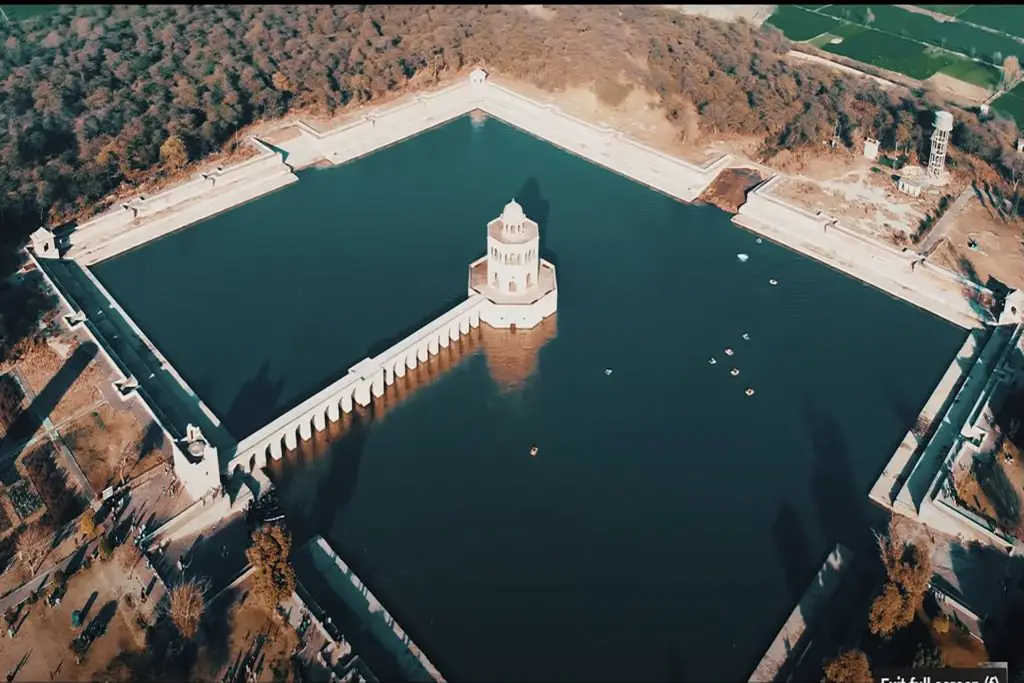Bala Hisar Fort is a historical fort located in the heart of Peshawar city in Khyber Pakhtunkhwa province, Pakistan. It is a symbol of the rich history and culture of the region and has been witness to many significant events over the centuries.
Bala Hisar Fort Location
Bala Hissar also spelled Bala Hisar, is a historic fort located in Peshawar, Khyber Pakhtunkhwa, Pakistan. First mentioned by the 7th-century explorer Xuanzang, the fort served as the royal residence of the Durrani Empire from 1747 when King Ahmad Shah Durrani conquered Peshawar.
Bala Hisar was briefly occupied by the Marathas after the capture of Peshawar in 1758 but was soon retaken by the Afghans. The Sikhs destroyed and reconstructed the fort after capturing Peshawar in March 1823. In 1849, the British East India Company reconstructed the outer walls of the fort.
Qila Bala Hisar Area
This 15-acre fort is believed to be around 2500 years old. The view from the BRT is so amazing. BRT has its own stop for bala hisar.
Bala Hisar Fort is located in the heart of Peshawar city, a historical fort. This building is a beautiful example of mixed architecture as it is a combination of Sikh Muslim and Mughal architecture
Bila Hisar Fort is a wonderful historical site to visit requires approval from the military before visiting, it is an ideal place to understand the old times living standards and environment.
It is now the headquarters of the border corps. Access inside is limited, but there is a small museum and a great view of the city from the walls.
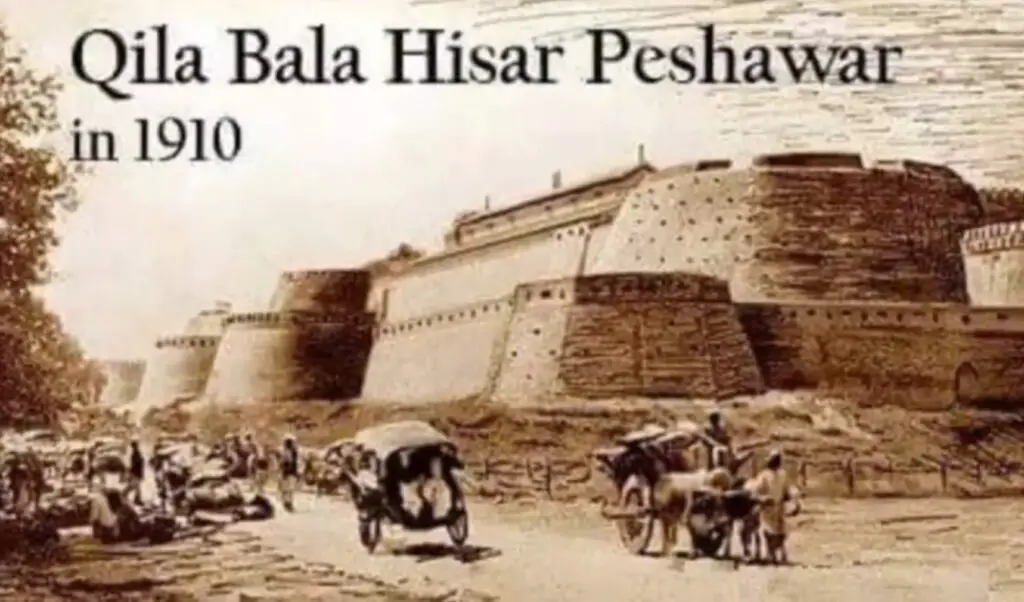
Bala Hisar Fort History
Bala Hisar Fort has played an essential role in the history of the region. It has been witness to many significant events, including the Anglo-Afghan Wars and the Indian Rebellion of 1857. The fort was also used as a base by the British during their campaigns in Afghanistan.
The word Bala Hissar is derived from Persian and means “elevated or high fortress”. It was given its name by the Pashtun king Timur Shah Durrani (1773–1793) and is still known by the same name even today, although the name was changed during the Sikh rule. This historic Bala Hisar fort is situated on a high hill in the northwest corner of Peshawar city. The fort was used as a royal residence for the Durrani Empire and was rebuilt during the Sikh and British rule.
The fort used to be noticeably far from the old city of Peshawar, but now with the construction of new buildings, the space between the old city and the fort has been obscured. However, the position of the fort on a high hill provides a powerful and panoramic view of Peshawar and the entire valley which is fascinating. If you happen to be in Peshawar on a clear sunny day, you will see the mountains around the Peshawar Valley. The view of the valley from this place is another fascinating sight.
This fort is spread over an area of about 10 acres (40,000 m2) and the height of the fort is about 90 feet above the ground level. An interesting fact is that the main entrance to the fort faces directly to the ancient road to India.
Bala Hisar Fort Built By:
The fort was built during the reign of the Kushan Empire in the 1st century AD and has since been rebuilt and renovated by various rulers and conquerors, including the Mughals, Sikhs, and British. The fort was once a strategic stronghold for defending against foreign invaders and was also used as a royal residence and government office.
Architecture of Bala Hisar
Bala Hisar Fort is an impressive structure with high walls, towers, and gates. The outer walls of the fort are made of stone and are around 20-30 feet high. The fort also has several gates, including the famous Bab-e-Khyber gate, which is the main entrance to the fort.
Inside Bala Hissar Fort, there are several buildings, including a mosque, a garrison, a palace, and a dungeon. The mosque was built during the reign of the Mughals and is a beautiful structure with intricate carvings and designs. The palace was also built during the Mughal era and was used as a royal residence. The dungeon was used to imprison enemies and criminals.
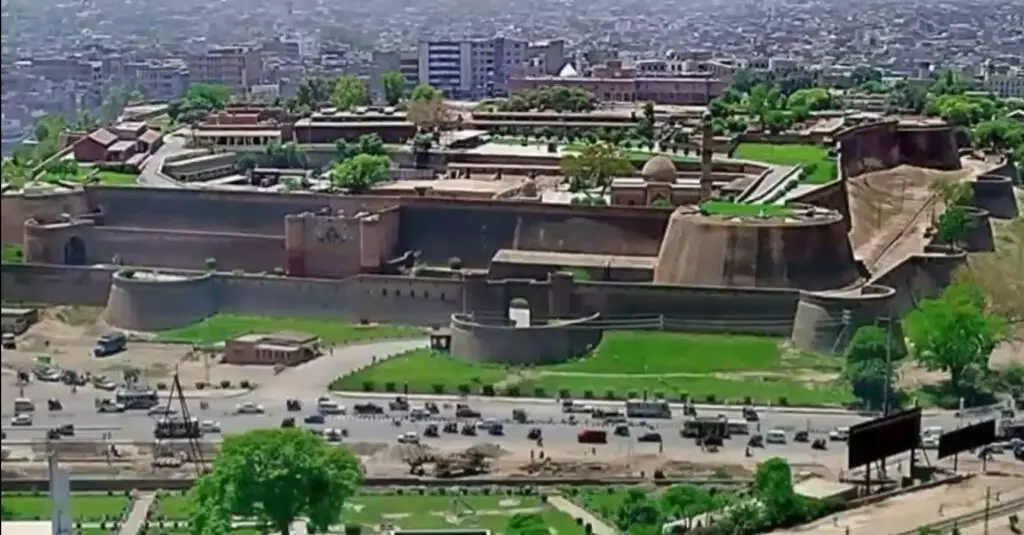
According to historical references, the Chinese traveler Hiuen Tsang, while visiting Peshawar somewhere in 630 AD, found a royal residence and called it “Kung Shing” with the Chinese word used for its meaning and explained as a fortified or walled part. the city in which the royal palace stood.
Like the Lahore Fort or many other forts in the area, the Bala Hisar Fort has witnessed ups and downs, construction and destruction, zenith and depths under the reigns of various conquerors, invaders, and kings, as Peshawar has always been a premeditated city and of vital importance to invaders and kings. Babur first built a fort here in 1526 after the conquest of Peshawar. Historical records tell us that after the overthrow of the Mughal Emperor Humayun by King Sher Shah Suri, the Afghans destroyed this fort.
When the Mughal Emperor Hamayun was staying there, he decided to rebuild the Bala Hisar Fort before leaving for Kabul and wanted to use it later for his conquest of India, so Emperor Hamayun himself oversaw the rebuilding of the fort, which was soon completed.
Bala Hisar Fort was destroyed in a battle between the Sikhs and the Afghans, but soon after the capture of Peshawar by the Sikhs in 1834, Hari Singh Nalwa started the reconstruction of the fort and named it Sumergarh. Hari Singh Nalwa installed a plaque above the gate of the fort with the inscription: This Sumer Garh was built in the city of Peshawar by Maharaja Ranjit Singh Bahadur in Raja Bikramjit Sambat in 1891.
When the British Raj took over the area, they reconstructed the outer walls of Bala Hisar in 1849, as well as the Lahore Fort.
After independence, Bala Hisar Fort became the home of the Frontier Corps and it is said that The Frontier Corps settled in the fort in 1948, while these were raised from the tribal belt under British rule with the Khyber Jezailchis, now the Khyber Rifles, and the Viceroy. Curzon placed the headquarters of the Frontier Corps in the Bala Hisar fort in 1948 and the same is still housed in the fort, and most of the existing barracks and military installations date back to the British period.
There is also an interesting military museum in the fort, which is open to the public with a special permit and contains weapons, uniforms, photographs, and other artifacts. The ceremonial changing of the guard takes place every day, ten minutes before sunset.
Although Bala Hisar Fort has lost its former glory, one can still identify the reflections of the bygone era through the corridors, parapets, and some rooms. The imposing Bala Hisar fort and its bleak ramparts still seem to monitor movement along the Grand Trunk Rd.
In conclusion, Bala Hisar Fort is a fascinating historical landmark that is an essential part of the rich history and culture of the region. It is a must-visit for anyone interested in history and culture and offers a glimpse into the past of the region.

